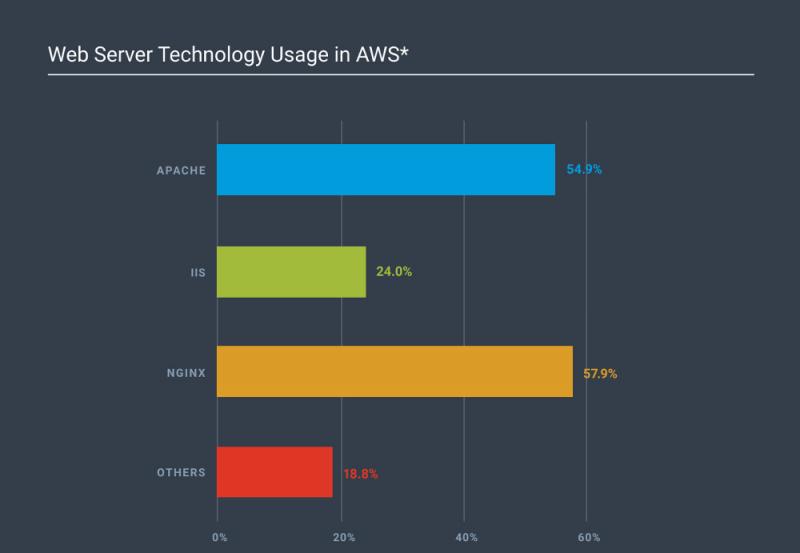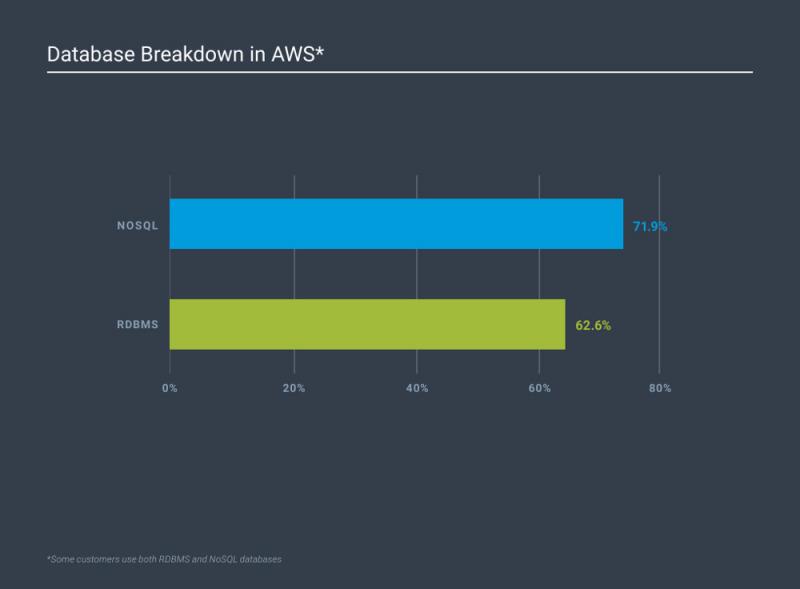At first glance, the numbers in Sumo Logic's State of Modern Applications in the Cloud 2017 report that was released on Tuesday don't seem to match what's being reported elsewhere. The first graph, a pie-chart titled "Breakdown of Customers," seems to indicate that Amazon Web Services has a 64 percent share, followed by "Others" with 26.4 percent, "Multi-Cloud" at 5.8 percent, and at the bottom Microsoft Azure with a pitiful 3.8 percent. There's no mention of Google Cloud Platform or IBM's Bluemix at all.
That seems all wrong, given that most sources are reporting that AWS holds something like a much lower 47 percent of the public cloud market, followed by Azure with a higher than indicated 10 percent, with GCP an also-ran with a share of 3.95 percent, which is still higher than what the report indicates for Azure.
The devil, they say, is in the details -- or in this case the not-so-fine print before all of the colorful bar graphs, pie charts and other eye candy that are used to present the report's findings.
"This data is derived from 1500+ Sumo Logic customers running applications on cloud platforms like AWS, Azure, Google Cloud, etc."
In other words, the report isn't about how everybody-and-her-brother are leveraging the cloud, but a snapshot of how Sumo Logic's enterprise customers are using it.
"The way we did this was to primarily mine data from our fifteen hundred odd customers," Sumo's VP of product marketing, Kalyan Ramanathan, told IT Pro. "We have obviously kept all this data anonymous, but what you have here is a good representative sample of what really works well in the public cloud environment."
This is good-to-have information for those running businesses who have been thinking of moving into the public cloud. Knowing how other businesses are harnessing the cloud might come in handy, maybe even more useful than the raw figures released by Gartner and the press.
In case you don't know, Sumo Logic is an industry leading cloud log management and metrics monitoring solution used by IT, security and development teams, with a customer base that runs from gigantic to pretty small. Customers include Marriott, Adobe, Toyota, and Twitter.
So what does this report reveal, other than the fact that an overwhelming majority of Sumo's customers use AWS?
One thing is that use of Linux is growing across public clouds. It's not surprising that Linux dominates AWS, accounting for 83.4 percent of the instances in the Sumo report, and that Azure is dominated by Windows, at 87.8 percent. What's interesting, however, is the rapid rise in Linux usage on Microsoft's cloud -- from 4 percent in 2016 to 12.1 percent in this years report.
"That's a very interesting trend," said Ramanathan, "and it perhaps highlights Microsoft's embrace of Linux and open source technology."
That 12.1 percent figure is interesting for another reason as well. Microsoft has long put Linux use on AWS at about a third, or much greater than indicated in this report. If Microsoft's figures are to be believed, and I think they are, then this means that Sumo's customers using Azure are spinning-up Linux far less frequently than the average.
Another area where there's no surprise is in Docker use on AWS, which continues to rise -- from 19.9 percent last year to 24 percent in this year's report.
"What that means is that one in four enterprises today are using Docker within their production environment, which is, I think, a pretty substantial number given that Docker is still in very early phases of its maturation," he said.
Use of AWS Lambda for serverless computing -- which frees DevOps from worrying about infrastructure for uses such as microprocesses -- is also on the rise. This year's usage rate is 23.5 percent, getting close to doubling last year's rate of 12.3 percent.
"Again, early technologies," said Ramanathan. "I would say Lambda is only two years in the making, and the fact that we have 23 percent of folks using it is pretty amazing. It sort of shows the early value that some of these customers are seeing with this kind of technology."
Other takeaways from the study? Use of the lightweight and versatile NGINX web server has now passed Apache on AWS, with IIS still dominating on Azure; AWS's native CloudFront CDN is far ahead of third party alternatives on that platform; and the use of NoSQL databases are on the rise, accounting for two out of three DBs on AWS.

Also on the database front, it doesn't look good for legacy players. "If you look at Oracle Database and Microsoft SQL server," Ramanathan said, "they have low single figure adoption in the cloud environment today."

There's also some not-so-good-for-anybody news in an age when large data breaches are rapidly becoming the rule rather than the exception. The number of AWS users not taking advantage of core security features is somewhat disturbing, with over 40 percent not taking advantage of Amazon's CloudTrail. Usage of VPC flow logs is even lower, at 14.1 percent.
Ramanathan thinks the reason might be because as companies move to the cloud, they think the security measures that worked well for their on-prem servers will automatically serve them well in the cloud.
"You need a cloud native solution," he said. "That's what these adopters of public clouds ought to grok, and grok quickly."
Maybe last week's Equifax breach will be a wake-up call and next year's numbers will be better.
We also might see more of Google in next year's report since on Wednesday at its Illuminate user conference Sumo announced its integration with Google Cloud Platform. In this year's sample only 30 or 40 Sumo customers were using Google's service, Ramanathan said, but indicated that the numbers are on the rise.
"We didn't have enough of a sample on the Google side of things, so we decided to not present any data there," he added. "We don't have any confidence given the small sample size that we have."





